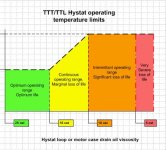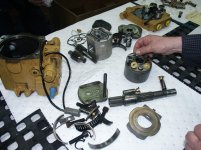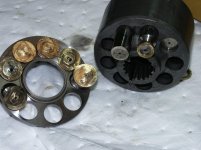TSO
Elite Member
Coyote machine,
That's a heckofa post. I'll try to answer your points in order.
1) oh yes I can blame myself. When I first got my tractor, I had to get rid of the slash from eleven semis of marketable timber - mostly 3 foot grand fir.
Unfortunately, about then I read about the German gardening concept called hugelkultur, and anyway my wife wanted a veggie garden.....
So I dug a hole 6 feet deep and 60 feet across and filled it with the slash ( there was a burn ban on at the time). When I hit the hard pan, i couldn't cut through it, try as I might even with a tooth bar. So I ripped into it with the box blade' rippers and this eventually worked. Then I put back some of the fill and all of the topsoil and now really have a spectacular garden.
Took over a month and I'm betting that that sort of thing caused my first hydro to go belly up.
I've been much more careful and gentile since then.
2) yes, I will install a temp guage.
3) yes. I have called Jordan and they are sending me the old hydro Monday.
4) I don't hose the radiators out. I've made a cleaner out of an 18 inch piece of brake line with a short right angle at the end. Connected to my air compresser. Does a heck of a job. I can't believe it leaves anything behind. I'm now cleaning it every 4 hours or so.
5) yes. I'm going to fix my grill.
6) yes. I have sent Dkrug a PM. Not sure I did it right though.
7) Bulldoze. Yes. See above.
I have a couple more comments and some questions regarding fluid flow and such, but my wife just climbed into the hot tub and I feel so dust incrusted from my home made radiator cleaner.that I'm going to
climb in.
I use my tractor every bit as hard if not harder than what you have described. I have put over 500 tough hours on her in the last 17 months. If you are blaming yourself for breaking your transmission based on the way you have used it, then mine should have broken several times over by now. It is possible, that the hydrostatic transmission itself has a design flaw if it can't handle the work that you are putting it through. It's not like a gear transmission where you can burn out the clutch. The system is designed to go into relief before it receives damage. I'm not going to claim that the hydrostat trans in my tractor is better than yours, because I simply don't know, however, again, mine should have broken numerous times by now if yours broke from the use you describe. Almost all of my dirt work is in medium range. I plow snow in high range. She works just as well as the day I brought her home. I'm wondering if something else in the system failed causing your unit to break.


